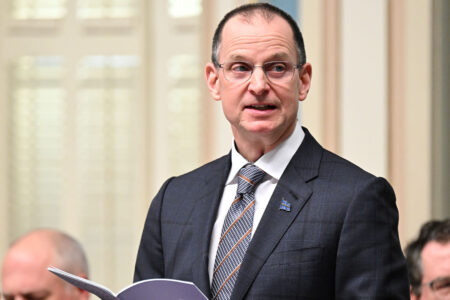
(This article has been translated into French.)
Think back to 1980. Canada was still a relatively closed economy; the regional trade agreement with the United States and Mexico was years down the road; the Access to Information Act was four years away from proclamation; the country did not have a Charter of Rights with constitutional teeth; the television series Yes, Minister was not yet on our screens; personal computers had not made a dent on our consciousness; the Internet might as well have been a new hair spray; 24-hour television news was unheard of. Within the government, the traditional bargain guiding the relationship between politicians and career officials, which began to take shape in the early 1900s, with the implementation of the Civil Service Act (1918), though on shaky grounds, was still in place. Canadians were still citizens, not yet clients to government officials.
Today, the federal public service operates under quite different and particularly challenging circumstances. As Aaron Wildavsky succinctly put it, bureaucracy is now “only for the brave.” Public servants no longer control their work environment to anything like the extent they did 25 years ago. Think of a dance floor. In 1980, ministers and career officials may not have had the floor (that is, the policy-making process and government operations) completely to themselves but, at least, they dominated it. The dance floor then also was something of a private club. Ministers and senior career officials were able to operate in relative isolation and prepare policy initiatives with limited public consultation. They could entertain and host costly lunches without having to post expense accounts on their departmental Web sites.
Today the dance floor is crowded with new actors: lobbyists, interest and advocacy groups, think tanks, research institutes, policy consultants. Then there are the media, elbowing their way onto the floor through access to information legislation; groups and even individuals, courtesy of the Charter of Rights; and ministerial staffs whose enhanced status now also entitles them to join the dance. Nor should we forget the private sector whose presence stems from public-private partnerships and makes or buys policies. Members of Parliament not in cabinet or parliamentary secretaries also want in. After all, they point out, they have the democratic legitimacy to do so. In brief, government has become a porous operation, open to many policy actors.
As a result, the public service has become increasingly uncertain about its role. The rules of the game have changed and public servants have tried as best they can to reconcile this new world and its requirements with old processes and traditional values. They also have had to try to define a new working relationship with their political masters. Midst this ferment, the public choice literature “unflattering as it is about the public service” came into fashion. Margaret Thatcher, for one, was impressed by it and urged senior career officials in Britain to read what it had to say.
Soon, politicians in many countries and from all sides of the political spectrum, began to point the finger at bureaucracy. Once respected as a dedicated cadre of professionals, public servants now came to be viewed as a problem (see, for example, the Crossman diaries). Bureaucracy bashing became de rigueur for those seeking political office. By the 1980s, government bureaucracy stood accused of many things: of being bloated, cumbersome, uncreative, lethargic and insensitive. In the 25 years since then, public servants have been subjected to an unprecedented assault by politicians on their capacity to produce policy advice and deliver government programs. If, as some of the beleaguered senior career officials insist, the problem is essentially one of perception, then it was as if politicians were trying to fix the perception by hyping the perception.
Confidence and morale in the public service plummeted and, by most accounts, it has yet to recover. For public servants, their traditional world is collapsing. On policy matters, politicians no longer want neutral advice. They now insist on responsive competence if not partisan competence. The former British politician, Michael Heseltine, summed up what politicians felt was wrong with the public service. “Thinkers-doers are in short supply, thinkers-advisers are the normal product of the system.” Modern politicians come to office with a policy agenda or at least a policy bias and look to career officials to embrace the bias and make it work. The public service’s ability to speak truth to power is not appreciated as it was 25 or 50 years ago. Public servants are left to square this development with the basic values of their Whitehall-inspired institutions: an anonymous, neutral and merit-based career service designed to promote detached, non-partisan and objective policy advice.
Public servants know full well that if they are not willing to offer the required responsive policy advice, then politicians can now turn to many other sources to secure it. Lobbyists, hired policy consultants, think tanks, enlarged ministerial officers are available to do the job. In addition, public consultations have become an important component of Ottawa’s policy-making process. No policy initiative or program can be brought forward unless it has been bolstered by prior extensive public consultation. This applies even to the budget process. The result is that federal policy-making is no longer, as it once was, essentially a ménage à deux, involving ministers and senior career officials. It is now a ménage à six, sept, huit, neuf or as many deemed necessary for a particular policy issue.
Career officials have also been repeatedly accused over the past 25 years of not measuring up when it comes to delivering programs and services. The New Public Management (NPM) movement which took form 25 years ago is market driven, and, in its essence, it seeks to weaken the bureaucratic arm of government. It is rooted in the public-choice literature, which argues that bureaucracies are inefficient at least in part because sponsors, and hence clients, have so little influence in shaping policy and programs or in deciding whether they should be continued or scrapped. A central feature of the movement is its strong emphasis on empowering “customers,” “consumers” and “clients.” Proponents believe that this will lead to a new public-service culture and break down the formal systems of control that lead civil servants to be overly cautious and to favour the status quo. Customers, unlike citizens, will force bureaucrats to deal directly with their complaints and shed new light on the weak points of government policy. Bureaucrats will also have to deal with the public’s views about what they ought to do.
Turning citizens into customers can profoundly affect the relationship between politicians and civil servants. Quite apart from the resulting debate over the possible loss of equity in the provision of public goods, the bringing together of “empowered” front-line government employees and “empowered” customers will also empower people at the bottom of the organization and on the front line. Carried to its logical conclusion, it should mean privatization of some state functions, provision of some public goods and services in a commercial fashion (for instance, make-or-buy) and a commitment to give citizens (read: “customers”) greater choice in public services (through vouchers). It also begs the question: Can everybody be empowered?
NPM’s goal is to break down formal systems of control and instill a new “bias for action” in government bureaucracies. Empowering front-line employees is also designed to ensure a leaner, more frugal government, since it moves toward more simple organization, with departments and agencies concentrating on their “core business” or on their programs. The goal is nothing short of changing the culture of the civil service and the attitude of its mandarins, making it exceedingly difficult for the Sir Humphreys of this world (viz. Yes, Minister) to continue to exercise undue influence over politicians.
If policy making can be turned over to hired consultants, think tanks and research institutes, and if government operations are to respond to market forces and emulate business management techniques, then what is left that properly belongs to the public service as an institution? David Emerson (a former provincial deputy minister and a former chief executive officer of a large Canadian corporation and currently a federal cabinet minister) recently observed: “I think a lot of CEOs in the modern economy are every bit as socially attentive and cautious and responsible as public servants.” Meanwhile, those who believe that public servants have the same business acumen as CEOs of private-sector firms are mightily thin on the ground.
Added to all of the above is the arrival of new information technologies. The Internet, in particular, is making vast quantities of information available to interest groups, think tanks, research institutes and individual Canadians. Governments, in consequence, have less control over who knows what and when, and the emerging networking model does not square with the old command-and-control departmental model. Boundaries within government, between departments, and between governments and outside groups and citizens are far less clear now than they were in the 1980s. The Internet is opening up government everywhere to unprecedented scrutiny. Mel Cappe, former clerk of the Privy Council, observed that “e-government requires public servants without borders, people who can work effectively across departments, programs and other borders…who see an issue in a broader, horizontal context.” He had earlier written in his annual report: “E-Government is not just electronic government. It is enabled government… E-Government is about people: new skill sets, mindsets and leadership approaches. It will transform how public servants work, relate to each other, do business, and engage citizens and other partners.” As a result, government was “moving away from a traditional model of public service based on hierarchical, directive management.” A review of the impact of e-government sponsored by ten federal departments concluded: “Many key decisionmaking processes within government remain beyond public scrutiny. By increasing the amount of available information on government, ICTs will result in new light being shed on these still-dark corners. As international processes are uncovered, citizens will demand greater accountability from government, and greater participation in decision making.”
New information systems are horizontal by design and capable of penetrating all sorts of “boundaries” in government. Information now flows not only between departments but also between government and outsiders, tending to dissolve boundaries. This and a number of other changes make it difficult to continue to operate on hierarchical lines.
To be sure, public servants have been trying to reform their institution in response to this new reality. A management centre, the Canadian Centre for Management Development (CCMD), later renamed the Canada School of Public Service, was established in 1988. In setting up the centre, senior public servants considered contracting out responsibility for management development. However, they opted to do it in-house, convinced that it was the only viable way to promote a unifying corporate culture and retain public service values. The renamed school has continued in the CCMD tradition. Its mandate is to encourage pride and excellence in public service; foster a sense of common purpose, values and traditions; support common learning and development needs; assist deputy heads meet their organization’s learning needs; and pursue excellence in public sector management and public administration.
Senior career officials, this time led by Paul Tellier, the then clerk of the Privy Council and secretary to the cabinet, launched an ambitious plan in the late 1980s to overhaul how government operates. Labelled Public Service (PS) 2000, the plan was designed to introduce a new management culture inside government. PS 2000 produced a table to contrast the “old culture” with the desired “new culture” (see table below). The contrast between the two is striking and instructive. It probably came as a surprise for retired career officials to discover that their culture was “rigid” and gave rise to “suspicious” and “secretive” behaviour, which in turn served to “stifle creativity,” which led them to “communicate poorly.” Still, the message could not be clearer, coming as it did from the clerk of the Privy Council. The traditional values of public administration were not only dated, they were counter-productive. Career officials were told to ready themselves to bring business practices to government operations.
The PS 2000 Secretariat argued that the transition would require a change from a culture “centred on prudence and probity, to one which recognizes the primacy of service to clients while accepting the need for reasonable prudence and probity.” It put together more than 300 recommendations for “delayering,” reducing central controls, reducing the number of job classifications from seventy-two to twenty-three, and making it easier to staff positions. A number of broad strategies would support the change: decentralization of decision making; empowerment; trust and confidence in a non-partisan, objective, and professional public service; a reduction of controls on managers; more flexible organizational structures; upgrading the skills of government managers; and a stronger sense of service to the public. Departments were also encouraged to review their own practices so as to identify “useless” red tape and to “delayer” management levels.
Senior federal public servants have from time to time also sought to reconcile their institution to the requirements of the various reform measures. John Tait, former deputy minister of Justice, chaired the Task Force on Values and Ethics in the Public Service in 1996. Its findings enjoyed a high profile, at least inside the federal public service. The report suggested that it was becoming more difficult to speak truth to power and pointed to the differences between “managing up” and “managing down,” arguing that managing up has as its focus “ministers and their needs or purposes” and constitutes “an essential element of our democratic system of government.” But “it has its side effects. One of them is a preoccupation with managing up …[which]…obscures the importance of managing down.” The problem is that “many senior public servants have made their careers because of their skills in managing up. They have been valued and promoted because they were adept at providing superiors with what they needed, in a timely fashion.” The point could not be lost on the reader: public servants are spending an inordinate amount of time serving ministers and trying as best they can to keep them out of political hot water and not enough time managing the human and financial resources assigned to them and delivering programs and services to Canadians.
Parliament passed legislation in November 2003 to modernize human resources management inside government. The act has several parts. Part three provides for a new Public Service Employment Act to modernize staffing in the federal public service. It enables deputy ministers and departments to develop processes that meet their departmental human resources plans. Accordingly, it provides considerable flexibility to departments so that positions that are identified as “future vacancies” can be staffed more quickly. It does not do away with the merit principle but updates it to give managers greater flexibility. What the act does essentially is enable managers to employ relative merit in selecting staff.
Any attempt to compare the state of today’s public service to that of twenty-five years ago is much like comparing an apple with an orange. The work of the public service today is subjected to a great deal more transparency than it was then. What anyone can learn today about the operations of government through access to information legislation and the Internet was unheard of in 1980.
There is little evidence, however, to suggest that these developments have strengthened the relationship either between politicians and career officials or between Canadians and career officials. If anything, public opinion surveys reveal that these relationships have deteriorated. Morale in the federal public service remains low.
Yet, the next 25 years will require a top-performing public service. The ability to manage change, to encourage immigration, to promote a competitive economy, to develop a multi-sectoral perspective to the economic and social challenges, while also serving ministers well and enabling Parliament to hold government accountable for its policies, programs, spending and activities will require a professional, competent and highly valued public service.
What to do? It is unlikely that reforms such as advocated by PS 2000 or the like can improve either morale or the workings of government. In light of the turmoil of the past 25 years, one can understand career officials’ supplication “O Lord, deliver us from further management reforms tied to the private sector.” The experience of the past 25 years provides more than enough evidence to make the case that the public service and government operations can never be transformed into business-like operations. The New Public Management movement has rushed government headlong into empowering public service managers and their employees without defining how one could properly assess performance. In brief, more effective accountability mechanisms is the key to strengthening the ties between public servants and politicians and Canadians.
The most promising avenue for the federal public service to pursue as it readies itself for the next quarter-century is looking to its history and its traditional values and strengthening accountability requirements within government. The federal public service needs to rediscover its frugal culture and to stress its ability to deal with all Canadians with a deep-rooted commitment to equity and fairness. It also needs to lead the way in establishing a collaborative mechanism to accommodate the fact that horizontal government is here to stay. There is simply no turning back the clock to the old ways of policy making, and in future departmental silos will exist in memory only. The public service itself will need to redefine how policy is struck and government services are delivered, in a way that transcends departmental boundaries.
Do you have something to say about the article you just read? Be part of the Policy Options discussion, and send in your own submission. Here is a link on how to do it. | Souhaitez-vous réagir à cet article ? Joignez-vous aux débats d’Options politiques et soumettez-nous votre texte en suivant ces directives.







